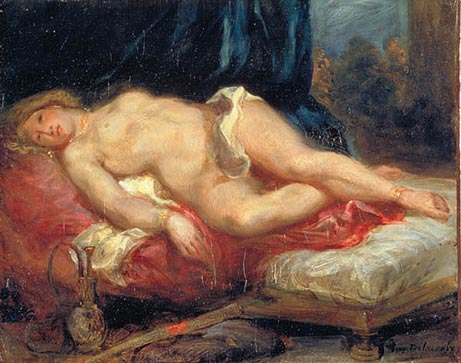A simple question, a longer answer. Okay, this is what I've absorbed: classical can be defined on various levels. First, High Classical Greek Art is that of the Parthenon, the work of Phidias, such at the Three Goddesses below. Note how the drapery flows with great beauty, enlightening certain parts of their bodies while hiding others. They have a grace and dignity that is very classical; their postures even suggest their ages as in the prime of life (although Time has lost their heads). 
Then there is Late Classical Art, when we get to the softer work of Polykleitos., on the left, whose work is not nearly as militant as (my favorite) the Riace Bronzes. These are the men I want battling on my side. 

An even wider definition of classical art would include Roman works as well, although many of them are derivative of Greek work. Where the Romans excelled (in addition to architectural developments like domes etc.) is in portraiture. Marcus Aurelius is a fine example of that.

In the Renaissance, there is a revival of classical interest. So, in an even wider definition, Renaissance can be included as classical art. There is more inner intensity with Michelangelo than with the more distant Greek works. His David is a great example of this.

Then there is the Baroque. There are three styles in the Baroque: the naturalism of Caravaggio, the dynamic illusionistic style of Rubens, and then the classicizing style of Poussin (who initiated the French Academy of Art and all the rules from which the Impressionists later broke away).



Notice how down-to-earth Caravaggio is (complete with horse’s rearend, bare feet and all…..how the church loved these images! Not!). See how pompous and busy Rubens is: here the fiancé of the King of France, Marie de Medici, is arriving, and she has the grand gods and nymphs greeting her (but her husband is at a chateau with his mistress…nice, eh?) Finally, see how Poussin is reviving classical simplicity, form and balance. Here the shepherds are examining a sarcophagus in the middle of Arcadia. Anything with classical garb (i.e. togas) is usually classical to a degree. Also, they usually have strong outlines and perfected detail. They are not interested in the sweeping brushstrokes and color that we get with Rubens.
In the early nineteenth century, we have a revival of classical art again in the work of David and Ingres, often called Neoclassical Art. They were rivals of the Romantics, who followed the sweeping brushstrokes, emotion and color of Rubens. Interestingly enough, the classicists were called Poussinistes, and the Romantics were called Rubenistes. (Now you’ve just added some big vocabulary words to your repertoire.)


Both of these works are called Odalisques, or ladies of a Middle-Eastern harem. I hope you can guess which is by Ingres, the neoclassicist, and which by Delacroix, the romantic. Can you see different stages of a story in these works? (This is usually when I probably bring too much sex into the classroom……but, sex is an inspiration for art, as well as music, movies, is it not?)
I usually stop defining classical at this point, because once Modernism begins (probably with the Impressionists), issues change. It is not only the amount of detail in a work, but the references to the values of ancient Greeks and Romans: valor, balance, courage, morality, etc. We just don’t see a great deal of that nowadays. So, off hand, I would not add Rockwell or comics to the classical tradition. I would call them realists, yes. But that is different from classicism (as the discussion of Pre-Raphaelites would show). The Pre-Raphaelites were dealing with a kind of realism, or as someone aptly noted, super-realism. But they were not dealing with classical themes at all. Their work is almost more illustrative instead, often of the Bible or other historical themes. Just because they do a few images of ancient Greece doesn’t make them classical. Their work is also too busy to be classical.
Now to throw in a completely different kind of idea: some would call Minimalism a classical kind of art. This is not because it relates to the content, or even the form, of typical classical art. But they call it classical because it has a dignified, "classical" simplicity and power. Maya Lin’s Vietnam Memorial might be called classical.
